James Penstone
This user hasn't shared any biographical information
Posts by James Penstone
Changes in Earnings Over Time For An Individual
Jan 21st
Tasks:
1) You should also create a hand-drawn chart to show how , in theory, a person’s earnings might change over the course of their lifetime. This should be saved as a digital version (you might draw it using online tool such as dabbleboard, or you might draw it by hand on a tablet, or you might draw it on paper and scan / photograph it).
2) Your task is to write the script for a audio report describing and explaining (giving likely reasons for) how earnings are likely to change over the course of a person’s lifetime, and you should refer to your image. You should aim for a report that lasts approximately 2 minutes maximum.
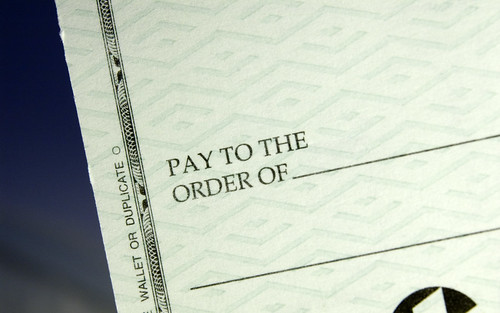
Image: Some rights reserved by dslrninja
Resources:
These resources should help you to visualise things. Some are quite complex – it is up to you to simplify the information while keeping some of their main information ‘in tact’.
Average Lifetime Earnings Trajectories by Education – by Political Calculations. Click on the image in the blog article.
Peak Earnings by Mother Jones
US Average Income per Income Earner by Age Group for 1995 and 2005 – via Political Calculations
Distribution of US Individual Income by Age, 1995 via Political Calculations
Education and raises by Marginal Revolution
This following ‘infographic’ actually tackles how ‘discretionary income’ changes – you should read what this actually means as it is different from earnings, but still worth exploring.
How Does Discretionary Income Change Over A Lifetime?
Money – Its Characteristics and Functions
Jan 15th
Your task is to answer these questions:
- What is barter?
- Where does barter still occur?
- What are three problems with barter?
- What are the four main functions of money?
- What are the necessary characteristics of money? You should find at least five, but there are more. Give examples to explain each characteristic.
Here is mjmfoodie on the topic but you only really need to watch from 48 seconds in until 3 minutes and six seconds in.
This video was created over 60 years ago, but is still a good introduction to the topic:
This is a well put together animation to show the problems with a barter system:
This video is also useful, but be careful, it mixes the characteristics up with the functions of money:
Think you’re getting the hang of it? Check this light-hearted approach to the topic:
Enquiry–Market Failure and Possible Solutions in Real Life Issues
Jan 8th
This activity is designed to address the following syllabus point from the Cambridge IGCSE Syllabus (0455) for Economics:
define private and social costs1 and benefits and discuss conflicts of interest in relation to these costs
and benefits in the short term and long term through studies of the following issues:
• conserving resources versus using resources;
• public expenditure versus private expenditure.1 Social costs are equal to the sum of private costs and external costs.
It is suggested that these enquiries are conducted in groups.
Research and prepare a presentation or written summary on one of the following issues for the your country which you are studying in. Suggestions on what to include on your presentation / summary are at the bottom of this post.
Type A – Public versus Private Provision of Key ‘Services’
Transport – should there be more public or private transport in your chosen country?

Image: Some rights reserved by Jeff Attaway
The Provision of Health Care – should there be more public or private provision?

Image: Some rights reserved by Fotos Gov/Ba
The Provision of Education – should there be more public or private provision?

Image: Some rights reserved by Artshooter
Type B – Use of versus Conservation of Key ‘Resources’
Using Wood from Forests as a Raw Material
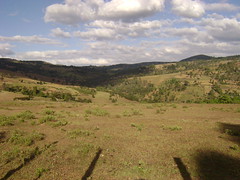
Image: Some rights reserved by afromusing
Using Rivers to Generate Hydro Electricity
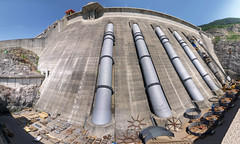
Image: Some rights reserved by Kam’s World
The Use of Fossil Fuel Power Stations
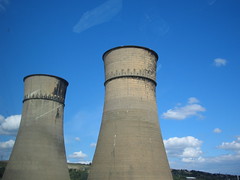
Image: Some rights reserved by Tim Ebbs
The Use of ‘Beauty Spots’ (such as beaches) for Tourism
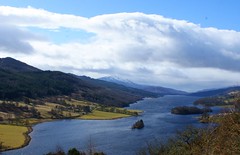
Image: Some rights reserved by sarniebill1
Suggestions of what you could include in your presentation / summary:
1) What are the private costs and benefits involved?
2) What are the external costs and benefits involved?
3) If Type A Issue – Government versus Private. How has the government been involved? How has the private sector been involved? Should this change and, if so, why?
If Type B Issue – Conservation versus Usage. What are the resources used for, how much are they used, are they conserved? Should they be used more or conserved more?
4) What conflicts of interests are there in this issue? What different groups are involved and how are they affected differently? Why might they have different views on using these resources / providing these services?
5) Discuss how this issue might differ between the short term and the long term. For example, what are the short term effects of using these resources / providing this service? What are the long term effects? Are there short term solutions and are there long term solutions?
Bonus points awarded for:
- Use of and accurate definitions of relevant key words/phrases.
- Real life evidence – statistics, places, dates, etc.
- Diagrams with explanations.
Suggested format:
Either
a) A slideshow that you can explain briefly to the rest of your class.
b) An email to someone, such as your teacher, but imagining that they are an influential person in the government and that you are writing to advise them on this issue as an Economic advisor.
The Marshall Lerner Condition and the J Curve
Dec 11th
1) A good web page, by http://welkerswikinomics.com:
The Marshall-Lerner Condition, the J-curve, and the US trade deficit
2) A useful video via the same author’s http://www.econclassroom.com:
3) A chance for you to play around with the Marshall Lerner condition yourself:
http://www.eco.rug.nl/~gigengack/ge/ML_Interactive/ML_Interactive.htm
Purchasing Power Parity
Dec 7th
Purchasing Power Parity by Mindbitesdotcom. This is an incomplete taster / ad for a course you have to subscribe to, but is still useful as is stands, provided you add to your understanding with other resources.
15: PURCHASING POWER PARITY by InformedTrades:
2 Useful web sites:
http://economics.about.com/cs/money/a/purchasingpower.htm
http://www.wisegeek.com/what-is-purchasing-power-parity-theory.htm
Questions:
1) What is PPP and explain how it works using a hypothetical example?
2) Evaluate the usefulness of PPP theory when applied to the real world.
The 2011 Eurozone Crisis
Nov 27th
Image: Some rights reserved by Images_of_Money
Here are some online resources to explore the so called Eurozone crisis that is occurring in late 2011:
Is the Euro Crumbling? Excellent, simplified infographic video on background behind current Eurozone crisis by BBC.
How can countries go bust? Useful one minute summary by the BBC’s Robert Preston.
In graphics: The Eurozone’s crisis – BBC provides useful graphs for comparing deficit, GDP, Unemployment and Debt in Eurozone countries and UK.
Timeline: The unfolding eurozone crisis by the BBC
Eurozone debt web: Who owes what to whom? infographic by BBC
EU Debt Crisis in Charts Infographic – via forexnewsnow.com
It’s All Connected: An Overview of the Euro Crisis – NYT Sunday Review (Interactive Graphic)
Paradigm Lost – Mapping The Crisis – carnegieendowment.org

Image: via infographicsinsights.com
Q&A: Greek debt crisis – BBC News round up of the Late 2011 economic crisis in Greece, and how it impacts on the Eurozone
Beware of falling masonry – article by the Economist (26th November 2011):
The crisis in the euro area is turning into a panic and dragging the zone into recession. The risk that the currency disintegrates within weeks is alarmingly high
Is this really the end? – article by the Economist (26th November 2011):
EVEN as the euro zone hurtles towards a crash, most people are assuming that, in the end, European leaders will do whatever it takes to save the single currency. That is because the consequences of the euro’s destruction are so catastrophic that no sensible policymaker could stand by and let it happen.
Eurozone crisis: Terms explained – The Telegraph defines some of the buzz words which frequently appear in current media analysis of the Eurozone crisis.
Are you struggling to understand your credit default swaps and your buybacks? Here are some of the terms used to discuss the eurozone debt crisis
An interpretation of possible outcomes of Greek debt (as at 26th October 2011):

Source: http://www.el-baghdadi.com
Further reading:
More useful updates can be found at these sites:
http://www.bbc.co.uk/news/special_reports/global_economy/
http://www.scoop.it/t/eurozone
http://www.guardian.co.uk/business/debt-crisis
http://www.economist.com/node/21524378
World Trade Organisation (WTO)
Nov 16th
The syllabus requirements:
4.4 World Trade Organization (WTO)
• Aims
• Success and failure viewed from different perspectives
Accordingly, your goal from learning about this part of the syllabus should be to be able to answer the following questions:
1) What are the aims of the World Trade Organisation?
2) What are some of the positive contributions of the World Trade Organisation to the world trading system? Evaluate these advantages and, in particular, identify the stakeholders who would agree that these are advantages with reasons for their agreement.
3) What are some of the criticisms made against the World Trade Organisation? Evaluate these advantages and, in particular, identify the stakeholders who would agree that these are disadvantages with reasons for their disagreement.
Image: Some rights reserved by World Trade Organization
A flash-based slideshow courtesy of the guardian gives an historical introduction:
This infographic by http://www.themoscownews.com sums up the main aims of the WTO:
History and functions of the World Trade Organization (WTO)
The ever reliable mjmfoodie gives us a introduction to GATT, which later became WTO. It gives us the history, moving on to the reasons for the WTO (aims). It is quite pro-WTO in its approach:
Episode 37: GATT/WTO by mjmfoodie (4’ 38”)
This is an impressive student project on the same topic which gets very detailed about membership requirements, but then moves on to the main aims of the WTO, which is useful for our syllabus requirements:
World Trade Organization by sdhettige (9’28”)
The World Trade Organisation is a documentary excerpt posted online by ![]() It is good for the historic set-up of the WTO (originally GATT – what was this?), and the various Rounds which shaped its development. It is also good for an overview of some global economic developments (such as the 1970s World Oil Crises) that are useful to know about in general for IB Economics.
It is good for the historic set-up of the WTO (originally GATT – what was this?), and the various Rounds which shaped its development. It is also good for an overview of some global economic developments (such as the 1970s World Oil Crises) that are useful to know about in general for IB Economics.
This next video is an engaging infographic on some of the difficulties faced by Kenya. Kenya’s WTO membership required in trade liberalisation (reduction of protectionism). This video is biased, but puts forwards some pretty clear arguments against the imposed trade regulations placed by rich Western/Northern economies, which some argue the WTO simply supports at the expense of poorer economies such as Kenya. Remember, the syllabus expects us to see the issue from different perspectives.
Animation: Trade Justice – why world trade rules need to change by tradeaid (2’ 28’”)
Michael Moore is a renowned political commentator/critic famous for a number of documentary films. In this clip he is clearly very critical of the WTO, giving a more extreme view of its possible ‘failure’:
Michael Moore by ProtestGlobalisation
Next we have short interview clips with various stakeholders in the Philippines, giving strong criticism of the potential effects of trade liberalisation, as actively encouraged by the WTO, on such a LDC.
Why WTO is Bad for Developing Countries by ymataglenn (3’ 46”)
Finally, ‘CuteChadz’, a student, sets out her own revision-focused overview of the World Trade Organisation:
A2 Economics: World Trade Organisation (WTO) in 8 mins by CuteChadz

Quizzes and an IGCSE Past Paper Question to Assess Your Understanding of Demand, Supply and Market Equilibrium
Nov 11th

Image: Some rights reserved by Valerie Everett
a) Exploring Supply and Demand by Kim Sosin – useful in that you can get feedback on the impacts on the Supply and Demand graph, shown on the right hand side of your browser.
b) True/False Quiz hosted on a http://www.oup.com site.
c) SELF-GRADING PRACTICE QUIZ #3 via http://www.sscnet.ucla.edu
The following four quizzes by Pearson via http://wps.aw.com are good means of testing your understanding of demand, supply,and the market equilibrium. Usefully, at the end of each quiz you can email your results to yourself and your teacher.
d) Quiz 1
e) Quiz 2
f) Quiz 3
g) Quiz 4
Source: CIE Economics Paper 4 Exam, May/June Session 2002
Trading Blocs
Nov 10th
IBO 2005-2012 Syllabus Requirements:
Trading blocs
• Free trade areas (FTAs)
• Customs unions
• Common markets
Higher level extension topics
• Trade creation and trade diversionObstacles to achieving integration
• reluctance to surrender political sovereignty
• reluctance to surrender economic sovereignty
Introduction to Trading Blocs
Episode 38: Trade Blocs by mjmfoodie
Perhaps a simpler introduction is here:
Trading Blocs by LanternaEducation
A more discursive explanation by student CuteChadz …
A2 Economics: Trade Blocs by CuteChadz
Trade Creation and Trade Diversion
Towards the end of the previous video, there was reference to trade creation and trade diversion, although the explanation was quite simple. You can get more depth out of these two effects of economic integration (the formation of trade blocs). The following two websites are recommended for reading up on these two topics:
http://tutor2u.net/economics/revision-notes/a2-macro-trade-agreements.html
http://www.revisionguru.co.uk/economics/creatdiver.htm
Obstacles to Achieving Integration
Finally, for brief but useful discussion of the obstacles to achieving integration, and summary of some of the above, visit this site:
http://centralecon.wikia.com/wiki/Economic_Integration

Should Eggs Be Sold At Their Pre-Flood Prices During the Flood Crisis?
Nov 3rd
In 2011, Thailand suffered one of its most destructive floods in history. This link will hopefully update with some accuracy to give this post some context in the future (at the time of writing, the floods are still very much underway): 2011 Thailand Floods on Wikipedia
Due to a combination of reduced supply (as many farms, factories, and transport links in the country were flooded) and an increase in demand (as people stocked up on essentials in case they would not be able to get any later on as the floods worsened), prices of many goods increased considerably.
Some news items and social media
On October 30th, this report from The Nation newspaper online emerged (click on the image to see the original article):
The day before, on the 29th October, the following tweet appeared reporting that the Commerce Minister apparently said consumers should not accept higher (“inflated”) prices for eggs:
Typically eggs, before the floods, would sell at 3 or 4 baht each, so the new price represented an approximate doubling.
On 31st October, the Commerce Ministry announced Price Controls on 9 Essential Goods – although eggs weren’t specifically included in the 9 Essentials, a representative from the ministry said “about 3.2 million eggs from Malaysia will reach Thailand on November 3. It would be sold at no more than Bt4 each”.
On the same day, 31st October, this report emerged (click on the image to see the original article). [Note, to “sell like hot cakes” means to sell very quickly and in large numbers].
In the scenario above, why did they sell like hot cakes? Why did huge queues form? Why did the government have to ration eggs after maintaining a ‘ceiling’ (maximum) price of 3 Thai baht?
On 1st November, this tweet appeared on the topic:
Now we are introduced to the word ‘shortage’ – in Economics that has a specific meaning – what does a shortage mean?
Some graphs
Let’s for simplicity argue that the price of eggs had risen because of a severe reduction in supply (although it is possible that the demand for eggs increased as well, it seems likely that supply would have reduced by more than any increase in demand). Follow the steps on the graphs below:
So the question you should try and answer, as a student of Economics, is in the title …
Should Eggs Have Been Sold At Their Pre-Flood Prices?
- Use diagram(s), fully labelled and explained.
- Refer to the developments in the news and items social media references given above.
- To conclude, try to explain the possible advantages of sticking with pre-flood prices and the possible disadvantages (you might have to think from a mixture of social, political and economic perspectives).
Here are some suggested resources to help you for the economics- side of things:
mjmfoodie on Market Equilibrium
Reffonomics gives interactive diagrams on Shortages and Surpluses.
mjmfoodie on Price Floors and Price Ceilings
A bit more advanced, Biz/Ed on Putting Demand and Supply Together: The Market Mechanism. The interactive diagrams could be used to explore the changes.














